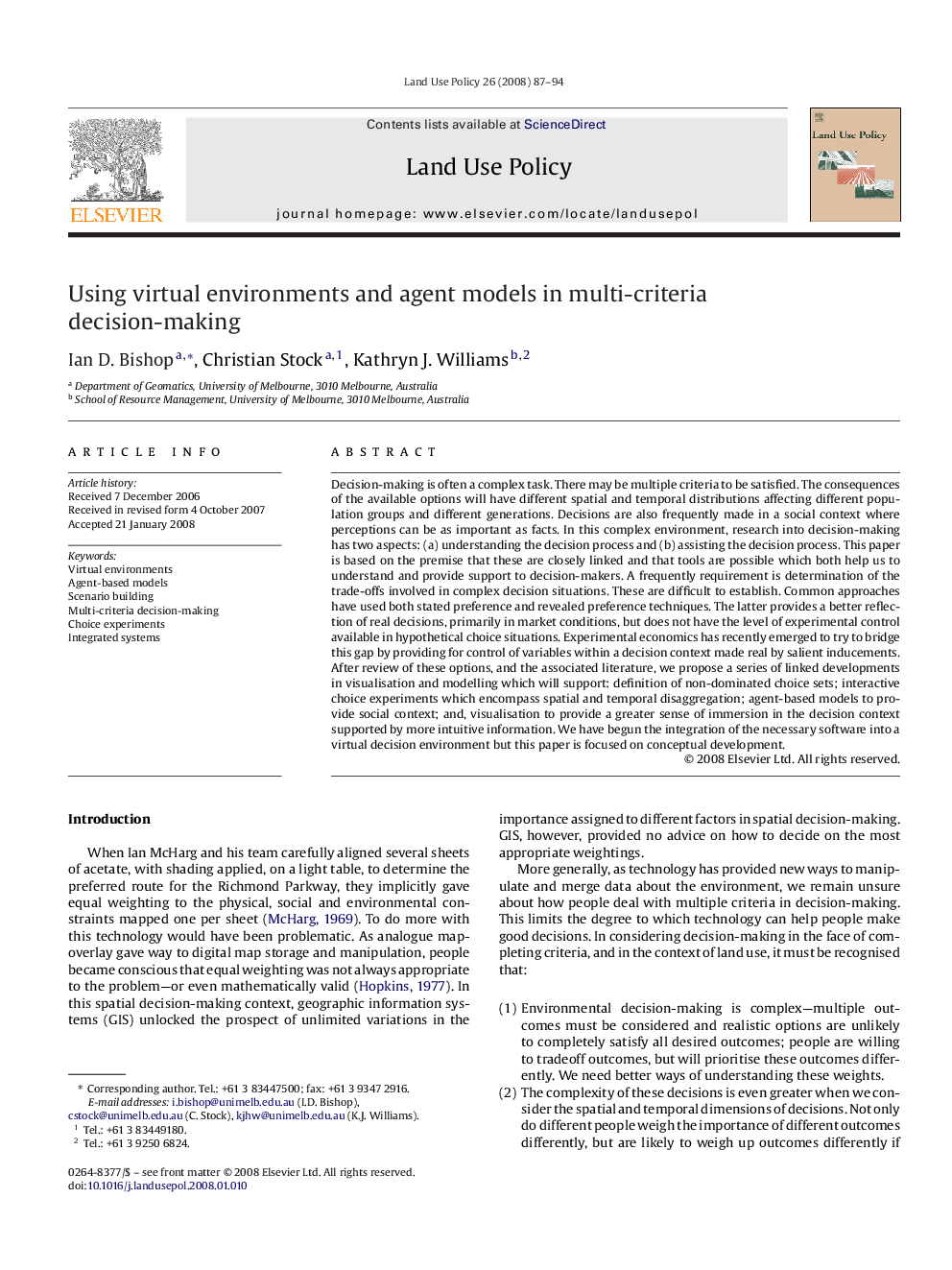| Article ID | Journal | Published Year | Pages | File Type |
|---|---|---|---|---|
| 93664 | Land Use Policy | 2009 | 8 Pages |
Decision-making is often a complex task. There may be multiple criteria to be satisfied. The consequences of the available options will have different spatial and temporal distributions affecting different population groups and different generations. Decisions are also frequently made in a social context where perceptions can be as important as facts. In this complex environment, research into decision-making has two aspects: (a) understanding the decision process and (b) assisting the decision process. This paper is based on the premise that these are closely linked and that tools are possible which both help us to understand and provide support to decision-makers. A frequently requirement is determination of the trade-offs involved in complex decision situations. These are difficult to establish. Common approaches have used both stated preference and revealed preference techniques. The latter provides a better reflection of real decisions, primarily in market conditions, but does not have the level of experimental control available in hypothetical choice situations. Experimental economics has recently emerged to try to bridge this gap by providing for control of variables within a decision context made real by salient inducements. After review of these options, and the associated literature, we propose a series of linked developments in visualisation and modelling which will support: definition of non-dominated choice sets; interactive choice experiments which encompass spatial and temporal disaggregation; agent-based models to provide social context; and, visualisation to provide a greater sense of immersion in the decision context supported by more intuitive information. We have begun the integration of the necessary software into a virtual decision environment but this paper is focused on conceptual development.
